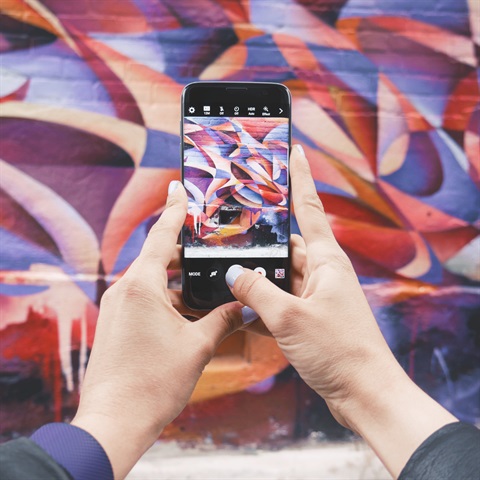Social Media Tips for Creatives

Social media is a great tool for artists to build a following for their work, engage an audience, and connect with a wider creative community. This guide gives you an overview of the major social media platforms and some general advice.
Why use Social Media?
Social media can be a great way to reach new audiences (both locally and around the world), showcase your work and connect to the broader creative community.
Getting Started
Along with an artist website, social media networks such as Facebook, Instagram and Twitter are great digital platforms that can be used to promote your work. Each of these platforms has their own strengths and can suit different purposes.
When creating social media accounts, try to keep your user name the same. This consistency will help people who are trying to find your work on different social media platforms.
Facebook is an all-rounder and has a lot of flexibility. This makes it a great, centralised spot to promote your creative practice. You can easily share links, images and videos on Facebook and create, or co-host, events for your upcoming exhibitions, performances or workshops.
This platform would particularly suit creatives that run events, such as musicians. Facebook groups are also a good way to get connected with other artists and people working in the creative industries.
Use Instagram to post visual content and document your work. The platform is great for creating instructional videos and demonstrations, capturing an event or documenting your work in progress. You can also ‘go live’ on Instagram, allowing you to engage your audience in new ways such as a Q&A session or livestreaming an event. This platform would particularly suit visual artists and creatives that use imagery in their work.
Twitter is great for engaging in conversation with the broader arts community, live tweeting events and keeping up to date with the latest news. Each tweet is capped at 280 characters, so you can be short and sweet, or reply to your own tweet and keep the conversation going. This platform would particularly suit writers and creatives working in the media
Youtube and Vimeo
Youtube and Vimeo are both platforms you can use to host and share videos of your creative work. You can also upload videos on these sites and then embed them in other platforms or website so they can be viewed there. This platform would particularly suit performers, film makers and digital artists.
What to Post
Now that you’ve set up your accounts, it’s time to work out the type of content you want to post. This is totally up to you! Some people only post finished artworks, while others like to showcase works in progress. You could also share content from other artists you like, or opportunities that are relevant to your creative community, such as grants and residencies. While it is okay to mix things up a little, in general it is good to be consistent with the type of content you post on your account.
Think about separating your professional and personal social accounts. If people are following you to see your art, do they really want to see your brunch? Be consistent with the type of content you are posting to build an audience that is interested in you, your work and what you post.
Plan
To help you manage your social media accounts, it can be helpful to use a calendar to keep track of content you plan to post in the future. While you can do this in a simple spreadsheet, there are also a range of apps that can help you schedule your content in advance. These include tweetdeck for Twitter and Hoot Suite or Buffer that covers multiple platforms. You can also post directly from these scheduling platforms and use them to track engagement.
An Image is Worth a Thousand Words
If you are a visual artist don’t forget to caption your work to provide a little more context. Not savvy with graphic design but want to spruce up your images? Canva provides free templates that make creating attractive posts, logos, posters and banner images a cinch. You can also find free stock photos you can use on platforms like Unsplash and Reshoot.
Get Connected
Tag people! Don’t go overboard but do tag relevant organisations, individuals and other artists. They might share your content and, if you’re lucky, maybe give you a cheeky follow.
Follow people! Along with following other creatives whose work you like, it’s a good idea to follow arts organisations, councils and funding bodies as a way to keep up to date with relevant opportunities such as grants, awards, residencies and professional development workshops.
Have a conversation! Comment on posts and threads, and ask people questions to get to know your online community a little better. Try to avoid generic and closed comments like ‘nice’ or ‘great work’ as they are unlikely to result in a reply.
Link back to your website! Make sure you include a link back to your website in your social media bio. You can also direct people the other way, and embed your social media links on your website and email signature.
It Takes Time. Be Yourself.
Remember that it takes time to build up a following. Experiment with what posting style and platform works for you. Maybe you’ll use Twitter everyday, but only post on Instagram once every week or so. Maybe you only want a Facebook page that you post on fortnightly.
Be realistic about how much time you can spend on social media and build a plan that works for you. While social media is best when it’s regularly maintained, make sure to take breaks from it and don’t let it get too overwhelming.
Additional Resource
A free, one stop shop for learning how to use Facebook-owned social media channels to market your creative business.